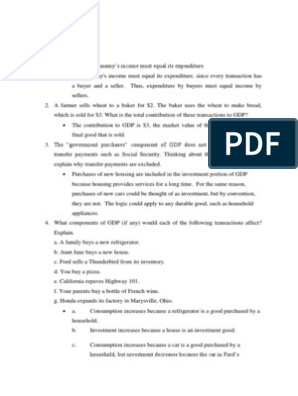0% found this document useful (0 votes)
120 views2 pagesQuestion Bank EFM KSV
The document is a question bank for an Economics for Managers course at S. V. Institute of Management, Kadi, developed by Prof. Sushil Mohanty. It contains a comprehensive list of questions covering various economic principles, concepts, and theories, including topics like market outcomes, GDP, inflation, elasticity, and market structures. The questions are organized by chapters and aim to facilitate students' understanding of key economic concepts relevant to management.
Uploaded by
kaushalt060Copyright
© © All Rights Reserved
We take content rights seriously. If you suspect this is your content, claim it here.
Available Formats
Download as PDF, TXT or read online on Scribd
0% found this document useful (0 votes)
120 views2 pagesQuestion Bank EFM KSV
The document is a question bank for an Economics for Managers course at S. V. Institute of Management, Kadi, developed by Prof. Sushil Mohanty. It contains a comprehensive list of questions covering various economic principles, concepts, and theories, including topics like market outcomes, GDP, inflation, elasticity, and market structures. The questions are organized by chapters and aim to facilitate students' understanding of key economic concepts relevant to management.
Uploaded by
kaushalt060Copyright
© © All Rights Reserved
We take content rights seriously. If you suspect this is your content, claim it here.
Available Formats
Download as PDF, TXT or read online on Scribd
/ 2





























































































